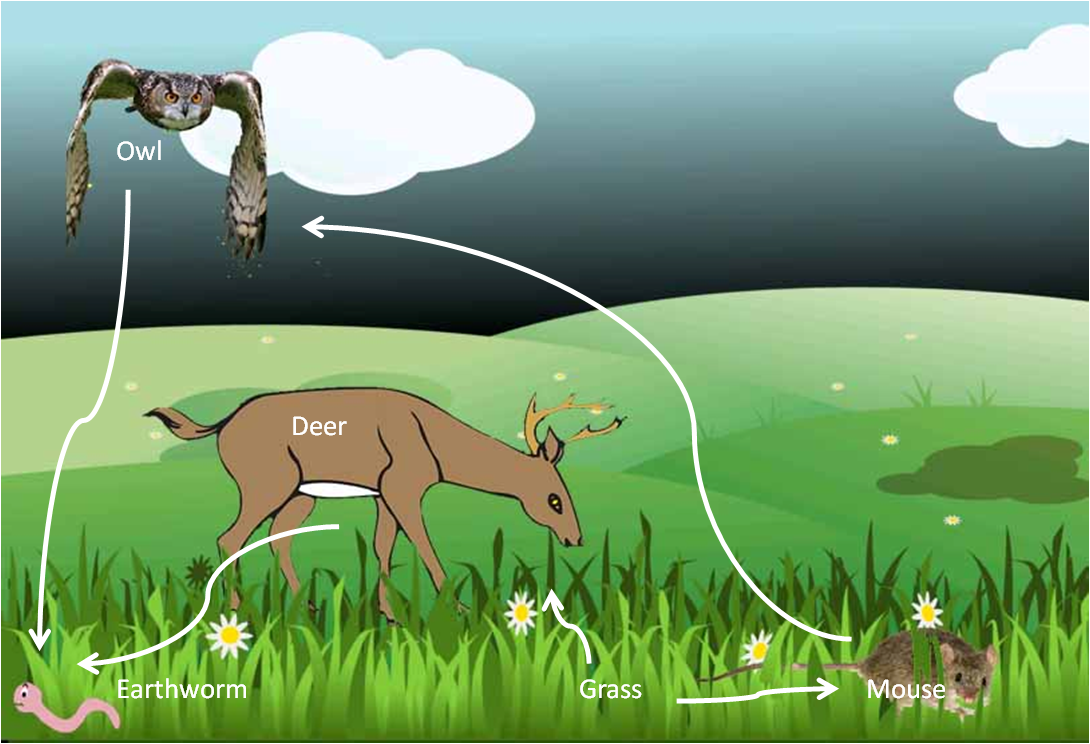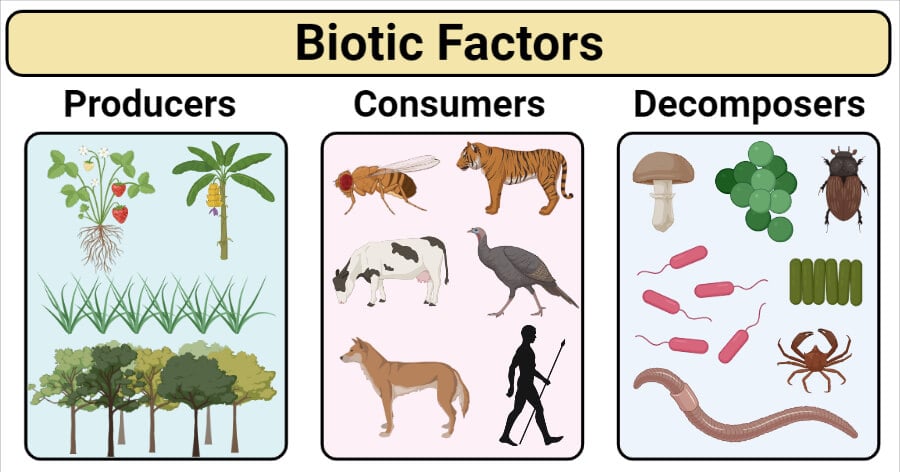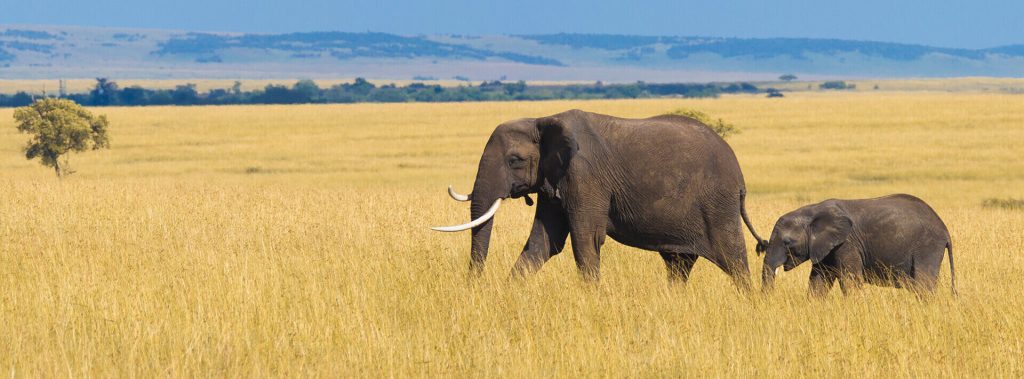In the fascinating world of ecosystems, there are two integral components that shape the dynamics of life: biotic factors and abiotic factors. Biotic factors refer to the living organisms that inhabit an ecosystem, while abiotic factors encompass the non-living elements such as sunlight, temperature, water, and soil composition. These factors interact and work in harmony to create a balanced ecosystem.
An Introduction to Biotic Factors
Biotic factors are the living components that make up an ecosystem. They include a diverse range of organisms, from plants and animals to fungi and microorganisms. Biotic factors play a crucial role in maintaining the delicate balance and functioning of the ecosystem as a whole. The interactions between these living organisms give rise to what we commonly refer to as the biocenosis.
What is the Biotic Factor?
The term “biotic factor” refers to any living organism or activity that directly or indirectly affects an ecosystem. Biotic factors can be categorized into three main groups based on their role in the flow of energy within the ecosystem: producers (autotrophs), consumers (heterotrophs), and decomposers (detritivores).

Types of Biotic Factors
Producers (Autotrophs)
Producers, also known as autotrophs, are organisms that have the ability to produce their own food using inorganic materials and energy sources. They are the foundation of the food chain and play a vital role in sustaining life in an ecosystem. There are two major classes of producers: photoautotrophs and chemoautotrophs.
Photoautotrophs
Photoautotrophs are the most common type of producer on Earth. They harness energy from sunlight through the process of photosynthesis to convert inorganic compounds into organic compounds. Examples of photoautotrophs include green plants, green algae, and some bacteria.
Chemoautotrophs
Chemoautotrophs are less common in most ecosystems. They obtain energy from chemical sources such as hydrogen, iron, and sulfur, which are not readily available in most environments. Some examples of chemoautotrophs are methanogens, which produce methane gas, and other bacteria that utilize unique metabolic processes.
Consumers (Heterotrophs)
Consumers are organisms that rely on other organisms for their source of energy and nutrients. They cannot produce their own food and must consume other organisms to survive. Consumers can be further classified into different trophic levels based on their feeding habits.
Decomposers (Detritivores)
Decomposers, also known as detritivores, play a crucial role in breaking down organic matter and recycling nutrients back into the environment. They obtain their energy by decomposing dead organisms or waste products from other living organisms. Decomposers include bacteria, fungi, worms, flies, and other organisms that aid in the decomposition process.

Characteristics of Biotic Factors
Biotic factors possess certain characteristics that distinguish them from abiotic factors and contribute to the complexity of an ecosystem. Some key characteristics of biotic factors include:
- Interdependence: Biotic factors rely on each other for survival and play specific roles within the ecosystem.
- Adaptation: Biotic factors have evolved unique traits and behaviors to survive and thrive in their respective habitats.
- Reproduction: Biotic factors have specific reproduction strategies to ensure the continuation of their species.
- Energy Flow: Biotic factors are involved in the transfer of energy within the ecosystem through feeding relationships.
- Diversity: Biotic factors exhibit a wide range of species and contribute to the richness and resilience of ecosystems.
Classification of Biotic Factors
Biotic factors can be classified based on ecological organization and their position in the trophic or food chain.
Ecological Organization
In terms of ecological organization, biotic factors can be classified as follows:
- Individual: This refers to an independent organism, either unicellular or multicellular, capable of surviving in a given environment without relying on other living beings.
- Population: A population consists of a group of individuals of the same species that share space and time. They interact with the same environmental factors and engage in activities such as feeding and reproduction.
- Community or Biocenosis: A community is a collection of different populations and species that coexist in the same place or territory, known as the biotope. These communities interact with the physical environment to form distinct ecosystems.
Trophic Levels
Biotic factors can also be classified based on their position in the food chain or trophic levels:
- Producers: Producers are autotrophic organisms that utilize energy from the environment, along with inorganic and mineral substances, to synthesize organic components through processes such as photosynthesis or chemosynthesis.
- Consumers: Consumers are heterotrophic organisms that rely on the organic matter produced by producers. They can be further classified into primary consumers (herbivores), secondary consumers (carnivores), and higher-level consumers.
- Decomposers: Decomposers occupy the final trophic level and play a crucial role in recycling organic matter. They break down dead organisms and waste products, returning vital compounds to the environment.
Role of Biotic Factors in an Ecosystem
Biotic factors interact with each other and with abiotic factors to shape and maintain the structure and dynamics of an ecosystem. The interactions between biotic factors can take various forms, including predation, competition, mutualism, commensalism, and parasitism. These interactions influence population sizes, species diversity, and the overall stability of the ecosystem.
Biotic factors are essential for nutrient cycling, energy flow, and the overall balance of an ecosystem. Producers convert abiotic factors such as sunlight and carbon dioxide into organic compounds, which are then consumed by consumers. Decomposers break down organic matter, releasing nutrients back into the environment for reuse by producers.
Differences Between Biotic and Abiotic Factors
Biotic factors and abiotic factors are distinct components of an ecosystem that work together to create a balanced and functioning system. The main differences between biotic and abiotic factors are:
- Nature: Biotic factors refer to living organisms, while abiotic factors encompass non-living elements.
- Source: Biotic factors originate from the biosphere, while abiotic factors can originate from the lithosphere, hydrosphere, and atmosphere.
- Dependence: Biotic factors depend on both biotic and abiotic factors for their existence, while abiotic factors do not require biotic components for their existence.
- Examples: Biotic factors include plants, animals, fungi, and microorganisms, while abiotic factors include temperature, water, sunlight, and soil composition.
Understanding the differences and interactions between biotic and abiotic factors is crucial for comprehending the complexity and functioning of an ecosystem.
Influences on Biotic Factors
Biotic factors are influenced by various factors that can shape the composition and distribution of organisms within an ecosystem. Some key influences on biotic factors include:
- Availability of Food: The availability of food resources can greatly impact the survival and population sizes of different species within an ecosystem. Limited food resources can lead to competition and changes in species abundance.
- Presence of Predators: The presence of predators can influence the behavior and distribution of prey species. Predators play a crucial role in controlling population sizes and maintaining the balance within an ecosystem.
- Presence of Parasites: Parasites can have a significant impact on the health and survival of their hosts. The presence of parasites can affect population dynamics and even lead to the extinction of certain species.
- Competition between Species: Competition for resources, such as food, water, and shelter, can influence the distribution and abundance of species within an ecosystem. Species that are better adapted to compete for resources are more likely to survive and reproduce.
These influences shape the interactions and relationships between different biotic factors within an ecosystem, ultimately affecting the overall structure and functioning of the ecosystem.
Benefits of Learning Biotic Factors
Understanding biotic factors and their role in ecosystems is crucial for various reasons:
- Conservation: Knowledge of biotic factors helps in the conservation and preservation of ecosystems and their biodiversity. By understanding the interactions between different species, we can implement effective conservation strategies to protect endangered species and maintain ecological balance.
- Ecological Studies: Biotic factors are a fundamental aspect of ecological studies. They provide insights into the complex relationships and interactions between organisms and their environment, enabling scientists to better understand ecosystem dynamics.
- Education and Awareness: Learning about biotic factors promotes environmental education and awareness. By understanding the importance of biodiversity and the interdependence of organisms, individuals can make informed decisions and take actions to protect and conserve the environment.
- Sustainable Resource Management: Understanding the role of biotic factors helps in sustainable resource management. By considering the impact of human activities on ecosystems, we can make informed decisions to ensure the sustainable use of natural resources.
Examples of Biotic Factors
Biotic factors can be found in various ecosystems around the world. Here are some examples of biotic factors in different ecosystems:
Marine Ecosystems
- Algae: Algae are photosynthetic organisms that play a crucial role in marine ecosystems. They are the primary producers and provide food and oxygen for other marine organisms.
- Plankton: Plankton are tiny organisms that drift in the ocean currents. They include both plants (phytoplankton) and animals (zooplankton) and form the base of the marine food chain.
- Bacteria: Bacteria are essential for nutrient cycling in marine ecosystems. They break down organic matter and recycle nutrients back into the environment.
- Plants: Seagrasses and kelp are examples of plants in marine ecosystems. They provide habitats, food, and oxygen for other marine organisms.
- Corals: Corals are marine invertebrates that form intricate reef ecosystems. They provide habitats for a wide range of marine species and play a vital role in protecting coastlines from erosion.
- Fish: Fish are an integral part of marine ecosystems. They occupy various trophic levels and contribute to the diversity and stability of marine food webs.
- Sharks: Sharks are top predators in marine ecosystems. They play a crucial role in controlling the populations of other marine species and maintaining the balance within the ecosystem.
- Jellyfish: Jellyfish are gelatinous organisms that inhabit marine ecosystems. They are important prey for many marine species and contribute to the nutrient cycling in the ecosystem.

Terrestrial Ecosystems
- Soil Bacteria: Soil bacteria play a vital role in nutrient cycling in terrestrial ecosystems. They break down organic matter and release nutrients that are essential for plant growth.
- Fungi: Fungi are important decomposers in terrestrial ecosystems. They break down dead organic matter and recycle nutrients back into the soil.
- Mushrooms: Mushrooms are fruiting bodies of fungi and are found in various terrestrial ecosystems. They play a role in the decomposition of organic matter and contribute to nutrient cycling.
- Trees: Trees are the dominant biotic factor in many terrestrial ecosystems. They provide habitats for animals, regulate temperature, and contribute to carbon sequestration.
- Herbs: Herbs are non-woody plants that play a role in nutrient cycling and provide food and habitats for animals in terrestrial ecosystems.
- Shrubs: Shrubs are woody plants that are smaller than trees but larger than herbs. They provide habitats, food, and shelter for a variety of animals.
- Every Animal: Animals, from insects to mammals, are an integral part of terrestrial ecosystems. They occupy various trophic levels and contribute to the biodiversity and functioning of the ecosystem.
These examples highlight the diverse range of biotic factors present in different ecosystems and their important roles in maintaining ecological balance.

How Kunduz Can Help You Learn Biotic Factors?
At Kunduz, we are committed to providing comprehensive and engaging learning materials to help you understand and master the concepts of biotic factors. Our interactive learning platform offers step-by-step explanations, to enhance your understanding of biotic factors and their significance in biology.
By exploring our carefully curated content, you will gain a deep understanding of the definition, characteristics, classification, and examples of biotic factors. Whether you are a student studying biology or an enthusiast eager to expand your knowledge, Kunduz is here to support your learning journey.
